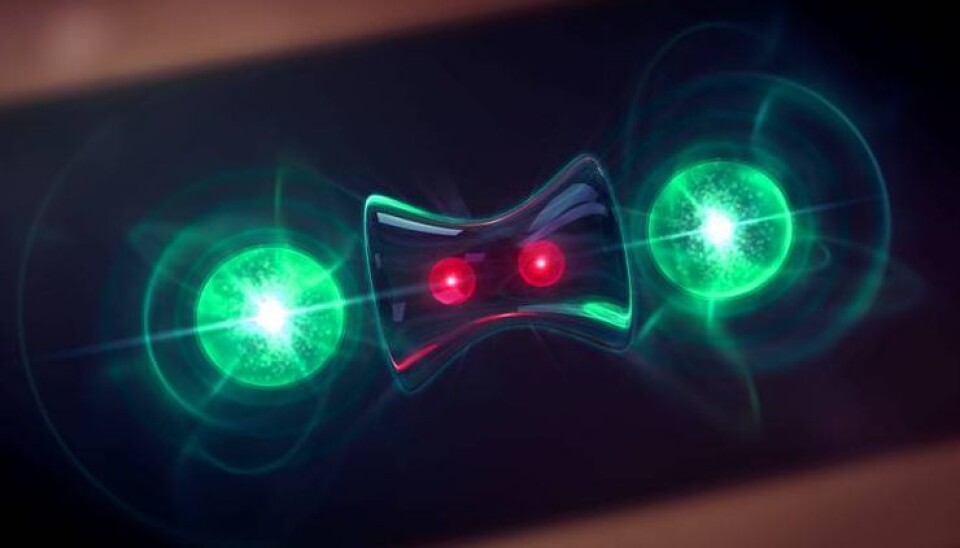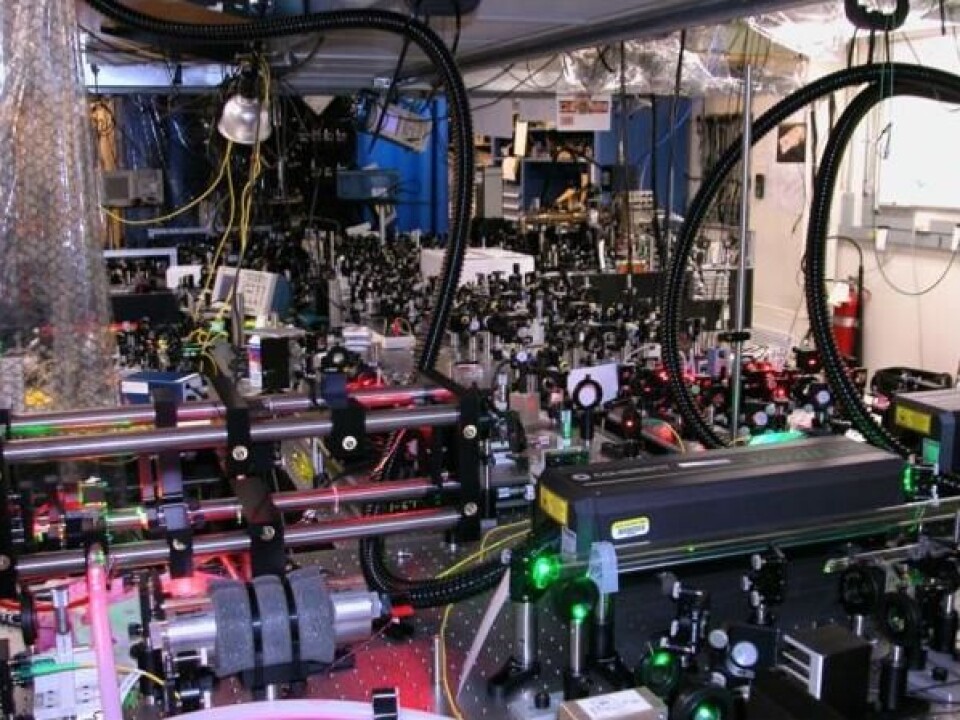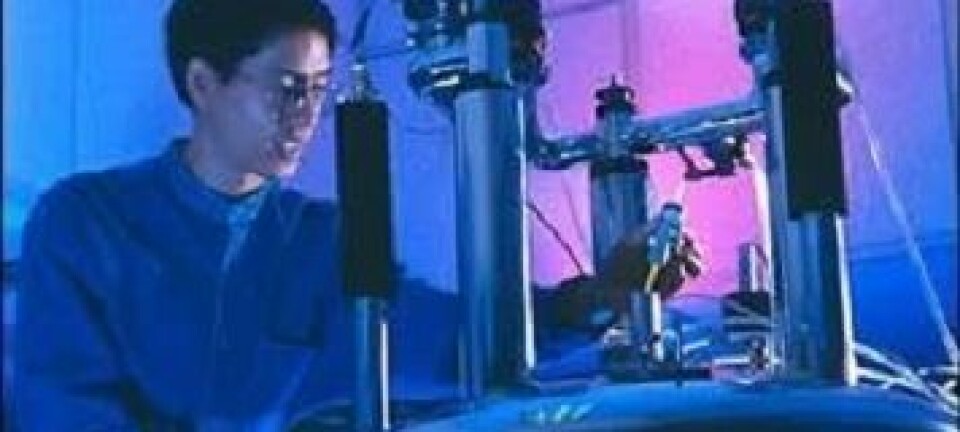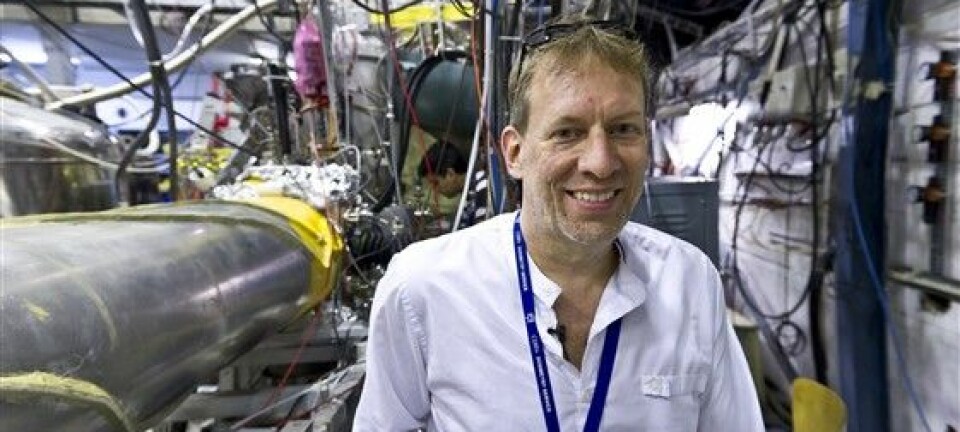
A new path towards quantum computers
The supercomputer of the future operates with quantum bits, but quantum systems are fragile and they degrade easily. Now Danish scientists have managed to turn this degradation into an advantage, making it easier to create the special quantum states required for a quantum computer.
A quantum computer can perform certain forms of calculations far more efficiently than a conventional computer can. That’s what makes quantum computers so exciting for researchers.
Quantum computers operate with quantum bits (qubits) as units of information. Their task is to get many qubits to work together. The individual qubits need to be brought into a state of entanglement, a physical phenomenon that occurs when pairs or groups of particles are generated or interact in ways such that the quantum state of the system must subsequently be described by a joint state, where it is not possible to understand each particle individually.
”Entanglement is the foundation for quantum information processing,” says Anders Søndberg Sørensen, a professor of quantum optics at the Niels Bohr Institute at the University of Copenhagen.
Together with PhD student Florentin Reiter, Sørensen has come up with a method that makes it easier to achieve this entanglement. They then asked experimental physicists from the National Institute of Standards and Technology in the US to check if the method works as they had predicted. It appears that it does.

The method is described in an article in the latest issue of the journal Nature.
Quantum systems are fragile
Quantum systems, where several qubits are entangled, are very fragile and even the tiniest disturbance can cause them to decay. This makes creating and maintaining such a quantum system a very difficult task.
Up to now, quantum physicists have been isolating the entangled qubits from the environment to avoid disturbing interactions that can destroy the fragile quantum state. However, the Danish researchers took the opposite approach: they turned the problem on its head and asked themselves whether disturbances of the quantum system may actually be an advantage rather than a problem.
Intentional disturbances
In the American experiment, which is based on the Danish idea, the physicists controlled the way that the quantum system, consisting of two beryllium atoms, interact with the surroundings. This makes it possible to bring the quantum system into just the ‘right’ entangled state.

”The atoms should ’talk’ to one another, but they must not talk to the surroundings. This would spoil the whole thing. That has been the approach up to now,” says Sørensen.
”But rather than trying to prevent the entangled atoms from talking to the surroundings, we have shown that this disturbance can be exploited. If we can gain full control of the way the atoms interact with their surroundings, then we can make a quantum computer.”
Two atoms entangled
The method is based on a chain of ions comprised of magnesium and beryllium. The ions are cooled down to near absolute zero at -273.15 degrees Celsius. The magnesium atoms act as a kind of cooling element in the chain of ions, while the beryllium atoms are the active elements. Entanglement is created between the electrons of the beryllium ions using carefully controlled laser light.
“The trick lies in the combination of laser light,” explains Reiter.
In principle, it would be possible to create a quantum computer based exclusively on our model. We know that it’s possible, but we cannot say if it is the best method. It is not an either/or question because quantum systems using our method can also be used as sub-elements of a larger quantum computer.
“The electrons can be in four energy states and if they jump around and land in a ‘wrong’ state, they are simply ‘kicked’ by the laser and we continue until they are where they are supposed to be. In this way, there is perfect entanglement. Unlike in the past, when you had to use carefully designed laser pulses to create entanglement, researchers can now just turn on the laser and grab a cup of coffee and when they come back the electrons are in the correct state.”
More qubits are required
However, quantum computers with two qubits are of little practical use. With the traditional method of bringing charged atoms into the same quantum state, physicists can reach 14 qubits, which is also some way away from the hundreds or thousands required to make quantum computers practical.
The question, then, is whether the Danish researchers have managed to find a shortcut for creating entangled states in which many atoms work together.
”We’re working on using our method for systems with more qubits. We have now tested our idea in the laboratory and it works fine with two atoms. Now we’ll see how far we can get. This is a new way of doing things, but it is too early to say whether it’s an easier way,” says Sørensen.
“In principle, it would be possible to create a quantum computer based exclusively on our model. We know that it’s possible, but we cannot say if it is the best method. It is not an either/or question because quantum systems using our method can also be used as sub-elements of a larger quantum computer.”
So although we are still some way away from seeing quantum computers being used in practice, we have now come a few steps closer with the scientific work from the Danish and American researchers.
----------------
Read the Danish version of this article at videnskab.dk
Translated by: Dann Vinther








